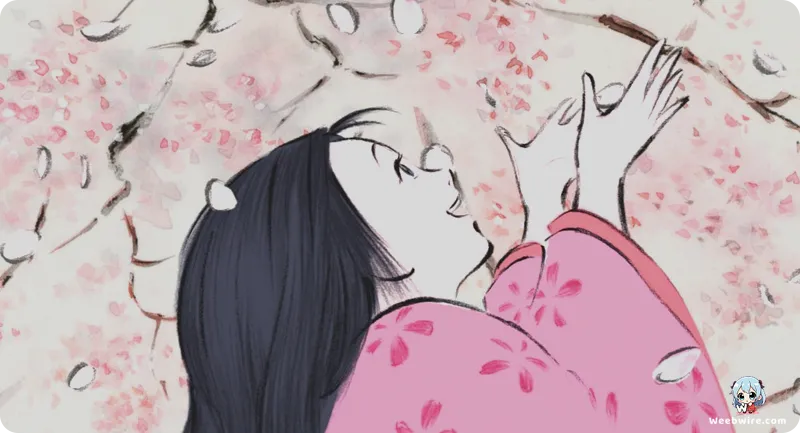The Art of Kaguya: Unpacking Studio Ghibli's Groundbreaking Hand-Drawn Epic

Studio Ghibli is renowned for its unparalleled animation and poignant storytelling, consistently pushing artistic boundaries. Among its celebrated works, Isao Takahata's 2013 masterpiece, The Tale of The Princess Kaguya, stands out as a truly revolutionary cinematic achievement. This film boldly departs from the studio's characteristic polished aesthetic, embracing a painstakingly crafted, hand-drawn style that vividly echoes ancient Japanese art forms. Its production journey reveals fascinating insights, as compelling as its timeless story itself.
A Groundbreaking Animation Style
A pivotal aspect of The Tale of The Princess Kaguya is its groundbreaking animation. Rather than the conventional cel-animated approach often seen in Ghibli features, Takahata meticulously opted for a watercolor and sumi-e (ink wash painting) visual language. This was far more than a mere stylistic choice; it served as a profound artistic declaration, designed to deeply connect with the film's ancient roots in The Tale of the Bamboo Cutter (Taketori Monogatari), one of Japan's earliest known folktales, tracing back to the 10th century. The animation is distinguished by its expressive, often minimalist lines and ethereal, pastel hues that imbue every frame with a palpable sense of life. The result is an almost impressionistic quality, simultaneously raw and profoundly emotional. Achieving this required immense dedication, as animators painstakingly rendered each frame by hand, striving for a spontaneity and fluidity that often eludes digital animation.
The Scale of Production
The sheer scale of this film's production is equally remarkable. The Tale of The Princess Kaguya commanded an approximate eight-year production timeline and a reported budget of around 5 billion yen (equating to roughly $49 million USD at the time), cementing its status as one of the most expensive Japanese films ever produced. This astronomical investment of time and resources stemmed largely from Takahata's unwavering perfectionism and his firm insistence on employing this distinctive animation technique. Every single drawing underwent rigorous scrutiny to ensure it perfectly conveyed the precise emotion and visual poetry he envisioned. Notably, the deliberate 'sketchiness' observed in certain sequences, particularly during moments of intense emotional upheaval or Kaguya's fleeting dreams, was not an indication of unfinished work but a carefully considered artistic decision to amplify rawness and immediacy.
Reimagining a Timeless Legend
While rooted in The Tale of the Bamboo Cutter, Takahata's vision transcended simple adaptation. He reimagined the narrative through a deeply humanistic, contemporary lens. The core story of a moon princess discovered within a bamboo stalk remains, but Takahata delved extensively into Kaguya's intricate emotional odyssey, transforming her from a largely passive mythological figure into a vibrant, multifaceted young woman who yearns for the simple joys of earthly existence. Her palpable despair and longing for freedom become central, especially as she is inexorably drawn into conforming to the rigid expectations of nobility. This nuanced character development, emphasizing Kaguya's internal struggles and her profound connection to the natural world, is a signature of Takahata's storytelling, elevating an ancient legend into a powerful exploration of human existence and the transient nature of life.

The Distinctive Musical Score
Audiences may also find immense value in the film's musical score, which, while sometimes overshadowed by Joe Hisaishi's acclaimed collaborations with Hayao Miyazaki, is a masterpiece in its own right. Composed by Shin'ichirō Ikebe, the music for The Tale of The Princess Kaguya presents a distinctly different sonic landscape, leaning heavily into traditional Japanese instrumentation and a more minimalist, atmospheric style. This perfectly complements the film's visual aesthetic and emotional depth, weaving itself seamlessly into the narrative fabric, enhancing Kaguya's moments of joy, sorrow, and ultimate transcendence without ever demanding overt attention.
Profound Thematic Explorations
Furthermore, the film's thematic explorations, including the dichotomy of nature versus civilization, the poignant beauty of life's impermanence (mono no aware), and the agony of separation, are profoundly embedded within its animation. For instance, the lush, vibrant natural landscapes of Kaguya's childhood are rendered with a joyous freedom of line and color, forming a striking contrast with the more constrained, formal, and at times stark visuals of her life within the capital city. This powerful visual language functions as an unspoken narrative, vividly illustrating the princess's gradual confinement by societal norms and her deep yearning to return to her origins.
A Lasting Legacy
Finally, The Tale of The Princess Kaguya bears the poignant distinction of being Isao Takahata's final film before his passing in 2018. It stands as an eloquent testament to his unyielding artistic vision and his courage to push the very boundaries of animation, even within a studio renowned for its innovation. While it may not have achieved the commercial blockbuster status of some of its Ghibli counterparts, its widespread critical acclaim, culminating in an Academy Award nomination for Best Animated Feature, irrevocably secured its place as a unique and enduring masterpiece. It offers a profound cinematic experience that continues to captivate and deeply move audiences with its unparalleled artistry and timeless wisdom, serving as a powerful reminder of the extraordinary beauty that emerges when art dares to be different, drawing from the past to illuminate universal human truths.
Credits
The Tale of The Princess Kaguya
Author
Traditional Japanese Folktale (The Tale of the Bamboo Cutter)
Cover Art
Osamu Tanabe
Studio
Studio Ghibli
Publisher
N/A - Ancient Japanese Oral Tradition
Producers





